|
 Secure Site
Secure Site
|
 |
Archive for the 'mindfulness practice' Category
 One of the ultimate Zen like experiences is waking-up from a great slumber refreshed and energized. A simple variation of yoga nidra (yogic sleep) taught by Swami Rama can help you restore your energy.
When travel (or everyday life) wears you down, a simple variation of yoga nidra (yogic sleep) taught by Swami Rama can help you restore your energy. This practice helps you settle into a profound state of rest while remaining alert at a deeper level of consciousness. By drawing your attention to your heart center, you will become a silent witness to your sleeping body and mind.
- Choose a room where you will not be disturbed. Sit on the floor against a wall, stretching your legs out and crossing one ankle over the other. Cup your palms in your lap and, with your eyes closed, either allow your head to hang forward or to rest against the wall.
- Feel the relaxed movement of your breath, letting it flow easily and smoothly. Then observe 3 to 5 breaths at the nostrils, to center your mind.
- Next, one by one, rest your awareness (and breath) at the eyebrow center, then at the throat center, and finally the heart center.
- Keeping your awareness at the heart center, quietly resolve to let your body and mind sleep for a specified length of time (say, 10 minutes). Trust your mind to awaken you when that time has elapsed.
- As you sleep, continue to be aware of the merest sensation of the breath (but no mantra). You are simply letting your body sleep, with awareness.
- Stay in this state until your mind wakes you up. Then slowly shift your head and stretch your body. Draw your attention outward, opening your eyes into your hands and then to the room around you.
Waking up in the morning should be as pleasant as falling asleep at night. The Zen Alarm Clock’s gradual, gentle awakening is transformative.
One of the ultimate Zen like experiences is waking-up from a great slumber refreshed and energized. Your mind and body are harmoniously one, both alert and focused. Having a refreshed mind and body are two keys to a natural and Zen lifestyle. Waking up in the morning should not be a loud and abrupt awakening, but rather it should be a peaceful positive experience. The right natural alarm clock can transition your deep and tranquil sleep into a serene start to consciousness. Imagine a long-resonating Tibetan bell-like chime waking you up to a beautiful morning experience.
The right alarm clock can be the most beneficial investment for you. With our Now & Zen natural alarm clock you are awakened more gradually and thus more naturally. Now & Zen is focused on creating a naturalistic lifestyle, and our clocks are an example of our philosophy.
 Your mind and body are harmoniously one, both alert and focused. Having a refreshed mind and body are two keys to a natural and Zen lifestyle. Rolf Sovik, PsyD, is co-author of Yoga: Mastering the Basics and is the director of the Himalayan Institute of Buffalo, New York.
 The Zen Alarm Clock transforms mornings, awakening you gradually with a series of gentle acoustic chimes Once you use a Zen Clock nothing else will do Now & Zen – The Singing Bowl Alarm Clock Store
1638 Pearl Street
Boulder, CO 80302
(800) 779-6383
orders@now-zen.com
Posted in Meditation Timers, Meditation Tools, mindfulness practice
 It's exquisite sounds summon your consciousness out of your meditative state with a series of subtle gongs. Entrepreneurs behave just like most Americans when it come to religion — but with one spiritual twist.
They’re significantly more likely to pray several times a day or to meditate, says sociologist Kevin Dougherty, a co-author of the Baylor Religion Survey.
The survey can’t answer whether prayerful, peaceful folks are more likely to take a business risk or whether the stress of a start-up drives folks to their knees or to the lotus position, Dougherty says.
Questions on entrepreneurs were a part of the survey underwritten by Baylor’s sociology department, the National Study of Religion and Entrepreneurial Behavior and the National Science Foundation.
Either way, 34% of entrepreneurs say they frequently look up to the Lord, compared with 27% of non-entrepreneurs. Nearly as many, 32%, say they look inward in meditation while just 22% non-entrepreneurs say they practice any of the eight forms of mediation, including Christian, Jewish and Buddhist variations, on the survey.
Leading the way: Christian meditation, reported by 18% of entrepreneurs.
Leah Rampy of McLean, Va., who ran her own company as an executive leadership coach, says her prayers were often that “the spirit would work through me.”
Mindful meditation, was cited by 17% of entrepreneurs. Wendy Woods, a consultant based in Toronto shares with her corporate clients how “meditation helps me push away fear and bring in calm and creativity.”
Buddhist meditation worked for Ray Yeh, of Ukiah, Calif., who created and ran a software sales company for 20 years. He found “working 12 hours a day, seven days a week leaves you no time to think, to get in touch with your inner self.” Yeh sold the company in 1999 and now lives in a Buddhist monastery in Northern California.
Psychologist Kenneth Pargament, scholar in residence at the Institute for Spirituality and Health at the Texas Medical Center in Houston, says, “Entrepreneurs have a strong sense they can take matters into their own hands. But they also face risk, unpredictability and uncertainty. Prayer and meditation can be important resources for people who are trying to achieve a lot and yet still face the reality that there is only so much they can control.”
Although meditation can be done in almost any context, practitioners usually employ a quiet, tranquil space, a meditation cushion or bench, and some kind of timing device to time the meditation session. Ideally, the more these accoutrements can be integrated the better. Thus, it is conducive to a satisfying meditation practice to have a timer or clock that is tranquil and beautiful. Using a kitchen timer or beeper watch is less than ideal.
And it was with these considerations in mind that we designed our digital Zen Alarm Clock and practice timer. This unique “Zen Clock” features a long-resonating acoustic chime that brings the meditation session to a gradual close, preserving the environment of stillness while also acting as an effective time signal.
adapted from abcnews.go.com
 Our Yoga and Meditation Timer & Clock can be programmed to chime at the end of the meditation or yoga session or periodically throughout the session as a kind of sonic yantra Now & Zen – The Meditation Timers Shop
1638 Pearl Street
Boulder, CO 80302
(800) 779-6383
orders@now-zen.com
Posted in Bamboo Chime Clocks, Meditation Timers, Meditation Tools, mindfulness practice
 Choki Eishosai, Sunrise at New Year By approaching the night sky with fresh eyes, you become more intimate with the world.
Starry Night
When we spend time in the wilderness, it can be tempting to focus our awareness on “doing” something: taking pictures; getting a certain amount of physical exercise; traveling from point A to point B; naming all the species of birds we encounter. While nature photography is a lovely craft, and we need to exercise for good health, and understanding what lives in our environment is a valid part of deepening our relationship with the land, these activities can separate us from a more intimate experience of the natural world. It is all too easy to forget to actually experience with all our senses that which we are busily capturing and identifying.
The natural world invites us out of our world of fixed concepts and into a closer proximity with reality—what Buddhist teachings call “nonconceptual awareness.” Experiencing the natural world with nonconceptual awareness means that, rather than seeing a [small] black bird and thinking, “That’s a starling, a nonnative bird introduced from England several centuries ago,” we stop and see each particular bird’s incandescent blue-black velvet feathers, piercing amber eyes, and delicate, wiry feet. Instead of encountering the world through a filter of ideas, memories, and labels, we connect deeply with the unfiltered and vital pulse of life in that moment.
If we’re not mindful, intellectual knowledge can easily cloud our direct experience. When we’re guided through life solely by our intellect, by our ideas of what we know, we’re robbed of a sense of discovery. A nonconceptual awareness allows us to approach each moment as fresh and new. A depth of wisdom can arise from such immediacy, and lead to greater wonder about the mysteriousness of life; we may realize just how little we can ever know.
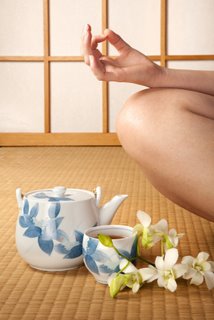 The beauty and functionality of the Zen Clock/Timer makes it a meditation tool that can actually help you "make time" for meditation in your life. Bring yourself back to balance. Whatever we experience most often provides us with an excellent opportunity to cultivate nonconceptual awareness. My garden sits in the shade of an old California oak tree that has a wide trunk, deeply veined and wrinkled. The gray-brown bark has deep, dark, vertical grooves intersected by thinner lateral lines——on some days it looks to me like a lopsided checkerboard. Where limbs once grew, there are large knots on the trunk the size of dinner plates. The tree curves gracefully skyward, supporting branches laden with young, shiny, dark green leaves holding their palms to the sun.
When I look at this oak without any preconceived ideas, it is a “different” tree each time I encounter it. My awareness or mood may be slightly different, altering how I see it. Depending on the time of day or time of year, shifting light changes its color. Gentle breezes and strong winds bend the tender limbs into different shapes. From this perspective I forever see it anew. Instead of relating to it solely through a static concept of “oak tree” or failing to see it in all its living, breathing aliveness, I can take it in with fresh eyes. This tree is my constant mindfulness companion, mirroring to me how present and open I am to the freshness of the moment.
The challenge is to be present to all of our experience with such wakefulness. Our concepts of time, of good and bad, of right and wrong can easily distort our ability to see the world clearly. Abiding with nonconceptual awareness allows us to observe the natural world, as well as the people and opportunities we encounter, without the lens of our fixed concepts, views, and opinions. Similarly, we can begin to look at ourselves with a fresh perspective in each moment, without any preconceptions or predetermined limitations.
The following meditation is a way to cultivate a nonconceptual awareness. It works best on a relatively clear night, preferably away from bright city lights. Find a place outdoors where you can lie down on the ground and view the night sky. Gaze up at that vast ocean of darkness that sparkles with infinite stars until you find the cluster of stars known as the Big Dipper. Officially part of Ursa Major, the Great Bear constellation, the Big Dipper consists of seven stars broadly spaced apart. Four stars make the shape of a large rectangle, and the other three splay out horizontally to the left from the top of the rectangle, so they resemble a large dipper, or a saucepan with a long and slightly curved handle.
Once you locate this constellation, try to let go of any preconceived ideas you have about it, and look at the cluster of stars without fixating on the shape of a big dipper. Allow yourself to see seven bright dots amid black space. Notice each star individually. Notice the stars in their context in the sky, within the vast field of shining lights. See how the stars are located in relationship to other stars not in this particular constellation. Observe the spaces between each star. As you continue the meditation, notice if you go in and out of being able to see the stars themselves, without the idea or image of the dipper. If in moments you find it difficult to let go of seeing the Big Dipper, shift your focus to other parts of the night sky. Try looking at just part of the constellation, along with other stars outside the constellation.
Close your eyes for a moment, relax your body, and then open your eyes and refresh your attention using a soft gaze. Let your vision be broad and spacious, and look at the stars without thinking about them, yourself, or anything else—just rest in open awareness. Another approach is to stare at the Big Dipper for a long time; after a while, the concept or memory of a dipper may fade and the stars will return to just being individual lights in the sky.
Once you practice this meditation, you can apply the technique to other constellations—seeing the stars without their associated imagery, taking in the simple reality of what is, and experiencing the vastness of the night sky. Try doing this meditation for up to half an hour, taking time to alternate between simply resting your awareness in the vastness of sky, and noticing whether you get caught up in concepts about specific constellations. You can also expand this practice to include other objects and people—you might try looking at a rose bush without the concept of “rose.”
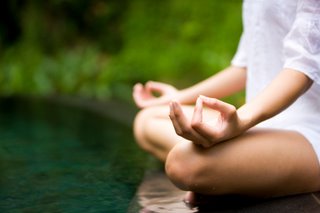 Our Yoga Timer & Clock can be programmed to chime at the end of the meditation or yoga session or periodically throughout the session as a kind of sonic yantra. The more you do this, the more you’ll begin to see how using only our preconceived concepts to approach the world can limit our experience and our awareness. Simple concepts can in no way describe the fullness and complexity of any experience or thing, including something as simple as a single, unique maple leaf or mushroom, or something as vast as constellations in the sky.
This technique can also help us approach people with a fresh awareness every time. Try looking at an acquaintance or a loved one without fixing on a preconceived idea about who they are, what they are like, or what they will do. We often get stuck in our concept of who someone is, which limits both people in the relationship.
A dear friend of mine sits his teenage daughter down every year, and they do a playful exercise in which they look at each other, and he says, “I am not your father,” and she says, “I am not your daughter.” This attempt to break down the narrowness of the concepts of “father” and “daughter” allows them to see each other more completely as people, rather than seeing only the parts of each other that relate to the roles they know each other in.
So when you look at someone, notice what concepts arise about them—man, woman, parent, child, waitress, taxi driver, lover. See how your approach to them changes based on your ideas of what it means to be old, young, sick, cute, shy, loud, extroverted, or smart. See then if you can let go of the labels and look at them without these concepts interfering with your perceptions of who they are. Notice their form, movements, and expressions, and try to get a sense of their essence beyond their surface appearance, movements, and expressions. When we look at people or anything in this way, we get to see the world anew, with fresh eyes. We come closer to experiencing the truth of how things actually are, undimmed by the concepts in our minds.
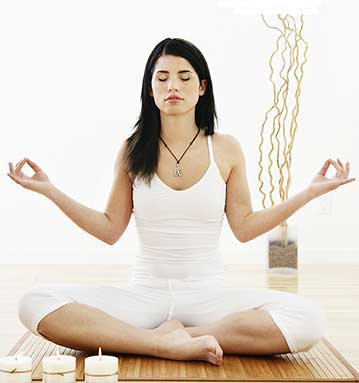 Our Yoga Timer & Clock can be programmed to chime at the end of the meditation or yoga session or periodically throughout the session as a kind of sonic yantra. Use our unique “Zen Clock” which functions as a Yoga & Meditation Timer. It features a long-resonating acoustic chime that brings your meditation or yoga session to a gradual close, preserving the environment of stillness while also acting as an effective time signal. Our Yoga Timer & Clock can be programmed to chime at the end of the meditation or yoga session or periodically throughout the session as a kind of sonic yantra. The beauty and functionality of the Zen Clock/Timer makes it a meditation tool that can actually help you “make time” for meditation in your life. Bring yourself back to balance.
adapted from yogajournal.com – Excerpted from Awake in the Wild: Mindfulness in Nature as a Path of Self Discovery, by Mark Coleman, with permission from Inner Ocean Publishing. © 2006 by Mark Coleman.
 It features a long-resonating acoustic chime that brings your meditation or yoga session to a gradual close, preserving the environment of stillness while also acting as an effective time signal.
Now & Zen – The Meditation Timer Shop
1638 Pearl Street
Boulder, CO 80302
(800) 779-6383
orders@now-zen.com
Posted in Bamboo Chime Clocks, Meditation Timers, Meditation Tools, mindfulness practice
 It's exquisite sounds summon your consciousness out of your meditative state with a series of subtle gongs. Once you experience the Zen Timepiece's progressive tones, you'll never want to meditate any other way. It serves as the perfect meditation timer. Find your inner artist and connect with your spirit.
“The urge to create is inherent in all of us and is an essential component of the human spirit,” Linda Novick writes in The Painting Path: Embodying Spiritual Discovery through Yoga, Brush and Color. Novick, an artist and Kripalu Yoga teacher who leads painting-and-yoga retreats, uses yoga to help her students open to the roots of their creativity.
Tap into your creativity with Nadi Shodhana Pranayama(Alternate-Nostril Breathing), a purifying and balancing technique that leads to a state of deep, receptive calm. The practice can open you to a rush of creativity while quieting your inner critic, says Novick. She offers these instructions in her book and suggests having paper and colored oil pastels or crayons at hand before you begin.
- Sit comfortably with your eyes closed. Gently bring your attention to the natural flow of your breath.
- Lift your right hand and fold your middle and index fingers down, leaving your thumb, ring finger, and pinkie open.
- Close your right nostril with your right thumb. Exhale, and then inhale through your left nostril. Release your right nostril and close your left nostril with your ring finger. Exhale, then inhale through your right nostril. Practice alternate breathing in this manner for several minutes, or until you feel relaxed.
- Slowly open your eyes and take up the oil pastels; draw freely, observing without judgment how it feels to cover the paper with color.
Use our unique “Zen Clock” which functions as a Yoga & Meditation Timer. It features a long-resonating acoustic chime that brings your meditation or yoga session to a gradual close, preserving the environment of stillness while also acting as an effective time signal. Our Yoga Timer & Clock can be programmed to chime at the end of the meditation or yoga session or periodically throughout the session as a kind of sonic yantra. The beauty and functionality of the Zen Clock/Timer makes it a meditation tool that can actually help you “make time” for meditation in your life. Bring yourself back to balance.
adapted from yogajournal.com by Charity Ferreira
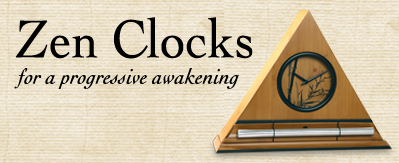 It serves as the perfect meditation timer. Now & Zen – The Meditation Timer Shop
1638 Pearl Street
Boulder, CO 80302
(800) 779-6383
orders@now-zen.com
Posted in Bamboo Chime Clocks, Meditation Timers, Meditation Tools, mindfulness practice
 What Monks Know...Set Your Meditation Timer & Chime Clock … and We Can Learn about the Fruits of Meditation.
By Rabiya S. Tuma
The images of monks with electrodes taped to their scalps were startling when they first appeared. Today, the ancient practice of meditation, begun in Vedic times, is attracting the attention of a growing community of scientists—and not all their study subjects wear robes. Meditation has gone mainstream: Millions of Americans practice some kind of meditation—among them school children, executives, cancer patients, prisoners, sports teams. Even many of the scientists themselves are meditators, for without a first-person experience of meditation, they say, it would be hard to design high-quality studies or even identify which questions are the right ones to ask.
Amishi Jha, a neuroscientist who studies attention and memory, took up meditation as a way to handle the stresses of life as a mother of two young children, with a faculty position at an Ivy League university. “As I meditated, I realized that what I was actually doing was training my attention,” Jha says. “It was really anaha moment as a scientist.” She decided she could use her scientific techniques and paradigms to discover what exactly was happening in the brain during meditation.
Jha is not alone. Scientists are using increasingly sophisticated high-tech tools—imaging of the functioning brain, for one—to learn what effect meditation has on the brain, on psychological distress, and on the physical symptoms of illness. In all cases they are finding that meditation leads to profound improvements in functioning.
One particularly interesting body of research has focused on mindfulness meditation, though researchers recognize that other forms of meditation may produce different or more significant changes in the brain and body. Part of the reason for the interest in mindfulness meditation, says Philippe Goldin, PhD, a clinical psychologist and meditation researcher at Stanford University in California, is that in 1979 Jon Kabat-Zinn, PhD, developed a specific eight-week course called Mindfulness-Based Stress Response (MBSR). The standard MBSR course encompasses formal meditation sitting with a focus on the breath, walking meditation, body scans in which participants observe their own physical sensations, eating meditation, and hatha yoga. Students also participate in weekly discussions and lectures, and commit to a daily home meditation practice.
More than 15,000 students have completed the course at the Center for Mindfulness in Medicine, Health Care, and Society, which Kabat-Zinn founded, and thousands more have taken the course elsewhere. With that long-standing experience, scientists know that the MBSR program is effective, and the consistency of the approach enables them to compare results between studies and over time.
Rewiring the Brain
In Jha’s first study on meditation and the brain, which will be published next month in Cognitive, Affective, & Behavioral Neuroscience, she found that mindfulness meditation improved study volunteers’ ability to focus their attention. Seventeen people with no prior experience in meditation completed a series of computer tasks before and after the MBSR course. The tasks probed three neurological systems in the brain that control different aspects of attention. The systems are called alerting, orienting, and conflict monitoring, and they correspond, respectively, to one’s readiness to pay attention to something, one’s ability to direct attention to that object, and one’s ability to focus on something in the presence of distractions. After completing the MBSR course, the volunteers were faster at orienting their attention than they were before it. They showed no improvement in computer tasks that relied on either the alerting or conflict monitoring realms of attention.
 Our Yoga Timer & Clock can be programmed to chime at the end of the meditation or yoga session or periodically throughout the session as a kind of sonic yantra. By contrast, when Jha challenged experienced meditators before and after a month-long meditation retreat with the same computer tasks, she found that their alerting system improved. “They got better at their readying capacity of attention,” Jha says. “They could keep their attention in a much more neutral state without knowing what they were to engage in.”
Contrary to what many meditators might expect, Jha didn’t find that meditation improved the volunteers’ ability to sustain their attention. “What we think might be happening,” she says, “is that even though the subjective experience is one of sustaining continual attention for a longer period of time, this experience may be a consequence of improvements in the moment-by-moment orienting of attention without being distracted away.”
Of course, Jha is not alone in her efforts to find out what is going on under the scalp during and after meditation. Antoine Lutz, PhD, and Richard Davidson, PhD, of the University of Wisconsin in Madison, made headlines three years ago when they reported that the electrical activity in the brains of Buddhist monks was significantly different from what was seen in meditation novices.
During the study, the monks were asked to enter a meditative state of pure compassion while wearing a cap with 128 electrodes on their heads. The resulting electroencephalogram (EEG) illustrated that the monks had high amplitude gamma waves, which are a particular type of brain wave that occurs when physically separated neural networks work together to process information. Thus these long-term meditators have somehow learned how to turn on coordinated activity in multiple brain regions.
 The beauty and functionality of the Zen Clock/Timer makes it a meditation tool that can actually help you "make time" for meditation in your life. More remarkable, perhaps, Lutz says, is that there seemed to be both short- and long-term differences between the monks’ gamma waves and those of novice meditator control subjects, which suggests that meditation can induce lasting changes in the brain. “The interesting thing is that meditators not only want to reach some state during meditation, but they also want to transform themselves, meaning that after a period of meditation you want to be somehow behaving differently and have a different way to experience emotions,” Lutz says. The brain changes that showed up in the monks, when compared to controls, suggest that those changes are happening—and at the level of brain wiring.
Changing Thinking Patterns
In addition to examining meditation’s impact on brain activity, scientists and clinicians want to know what impact it has on a person’s psychological health and well-being. And though individual meditators may say they feel better as a result of meditation, only carefully designed scientific studies can help pin down who benefits from such practice and what those benefits really are.
One of the most important studies in this area was done by Zindel Segal and John Teasdale at the University of Toronto. They reported that a combination of cognitive therapy and mindfulness meditation halved the risk of relapse in patients with a history of three or more episodes of major depression.
The likely explanation for this dramatic risk reduction is that individuals with a history of depression are extremely vulnerable to negative thinking. Such thinking can trigger a spiral into another depressive episode. Mindfulness training takes away some of the power from those thoughts by allowing individuals to see that they are only thoughts or memories, not facts, and that they are only part of a larger experience.
“Time and again, mindfulness-based stress reduction has been shown to be very helpful in reducing symptoms of anxiety, depression, and experience of physical pain,” says Stanford researcher Goldin. “It gives people specific skills to be with whatever is happening and not add on layers of thinking, interpreting, and habits that actually enhance the psychological imbalance.”
 Bring yourself back to balance. Goldin himself came to meditation while studying in Nepal during his junior year of college. While there, he spent time living in monasteries, learning Sanskrit and Tibetan Buddhist philosophy. “And most important,” he says, “I was meeting many different teachers who just through their example showed me that their mind was more free and unencumbered than mine…through meditation practice.” When Goldin came back to the United States and embarked on a career in clinical psychology and neuroscience, he brought the meditation skills with him.
Exercising the attention “Muscle”
In his current research, Goldin has been testing the effect of MBSR and cognitive-based therapy in patients with social anxiety. People who suffer from social anxiety disorder, which is also called social phobia, have an intense fear of negative evaluation by other people, they fear humiliating or embarrassing themselves in performance or social situations, and can have trouble forming close relationships or even leaving the house. Goldin finds that patients who participate in a modified MBSR course, which takes nine weeks and integrates cognitive skills as well as mindfulness meditation, feel a relief of their symptoms and do better on diagnostic tests.
To find out what is happening at the level of neurobiology, Goldin gives them a series of challenges and exercises while they are lying in a magnetic resonance imaging scanner. The functional MRI (fMRI) images show how much blood is flowing to different regions of the brain, which is indicative of how hard an area is working. In these tests, which he conducts before and after the nine-week course, Goldin first triggers the participants’ anxiety with images or verbal cues. Then he asks them to either try to regulate their emotions through self-talk aimed at reducing the intensity and credibility of the trigger, or by mindfulness meditation with a focus on the sensation of their breath at the tip of their nose.
When he looks at the pictures that were taken at different points in the exercise, he finds that the amount of activity in different regions of the brain shifts substantially. When the participants first experience the trigger, without making an effort to control it, activity is high in the limbic regions of the brain, which encode fear and other emotions. After mindfulness training, however, when they shift their attention to their breath, the brain activity shifts to the networks involved in attention—the same ones that Jha studies. Moreover, they were more adept at using self-talk strategies to reduce activity in the limbic regions. “This is promising. It is like when you use a muscle for three months and it becomes stronger and bigger. These people are using the muscle of attention,” he says.
Effects on the Body, Too
Numerous clinicians have found that meditation helps with physical ailments as well. For example, Kabat-Zinn found that patients with psoriasis healed almost four times more quickly if they used a combination of standard ultraviolet light therapy and meditation.
Linda Carlson, PhD, a clinical psychologist at the University of Calgary, and her colleagues regularly use MBSR with cancer patients and have found that the practice improves both subjective and objective measures of health and well-being. “We’ve found a huge effect,” Carlson says, “on symptoms of stress, anger, muscle tension, digestion, sleep, anxiety. We were surprised at the size of the effect. It was quite a bit bigger than research on a lot of other interventions shows.”
Recently the team has looked at the impact of MBSR on blood pressure in women cancer patients, most with breast cancer. They found that in women with high blood pressure, the training led to drops in pressure that were similar to when a patient is put on medication. In other words, the women’s blood pressure dropped from slightly above normal into the normal range—without pharmaceutical intervention.
Numerous groups have also seen improvements in immune system functioning after MBSR training. Carlson thinks that the adjustments reflect a re-balancing of internal rhythms that get out of whack during episodes of illness or disease. By meditating regularly, the patients seem to be able to restore that balance and strengthen their own physical and mental defenses.
For Jha, her work studying the brain adds an extra layer of challenge to letting go during her practice. “Because I think so much about it in my normal non-meditating life, about what are the mechanisms of these effects, when I am actively practicing it is hard not to wonder about what might be happening.”
For the rest of us, interesting as all these findings may be, we have simply to turn our attention to our breath and begin to reap all the benefits.
Although meditation can be done in almost any context, practitioners usually employ a quiet, tranquil space, a meditation cushion or bench, and some kind of timing device to time the meditation session. Ideally, the more these accoutrements can be integrated the better. Thus, it is conducive to a satisfying meditation practice to have a timer or clock that is tranquil and beautiful. Using a kitchen timer or beeper watch is less than ideal.
 Meditation is generally an inwardly oriented, personal practice, which individuals do by themselves. Meditation may involve invoking or cultivating a feeling or internal state, such as compassion, or attending to a specific focal point.
And it was with these considerations in mind that we designed our digital Zen Alarm Clock and practice timer. This unique “Zen Clock” features a long-resonating acoustic chime that brings the meditation session to a gradual close, preserving the environment of stillness while also acting as an effective time signal. The Digital Zen Clock can be programmed to chime at the end of the meditation session or periodically throughout the session as a kind of sonic yantra. The beauty and functionality of the Zen Clock/Timer makes it a meditation tool that can actually help you “make time” for meditation in your life.
Rabiya S. Tuma, PhD, is a biologist. She is a regular contributor to the Dana Alliance for Brain Initiatives and writes frequently on brain research.
 The beauty and functionality of the Zen Clock/Timer makes it a meditation tool that can actually help you "make time" for meditation in your life.
Now & Zen – The Meditation Timer Shop
1638 Pearl Street
Boulder, CO 80302
(800) 779-6383
orders@now-zen.com
Posted in Meditation Timers, Meditation Tools, mindfulness practice
 Bedtime meditation No need to be mystified by meditation, says Steven Hartman, director of professional training at Kripalu Center for Yoga and Health. To ease into a practice, try this simple mantra-based technique. Set your Zen Timer with Bowl gong for five to 10 minutes right before bed.
1. Lying on your back, close your eyes and notice your breath.
2. As you inhale, focus on a soothing phrase, such as “I am safe and whole.” You can say it aloud or in your mind. When exhaling, silently repeat the mantra. The specific phrase isn’t that important, says Hartman; the mantra’s purpose is “to give your mind something simple to focus on.”
3. If your mind wanders, gently turn your attention back to your breath and back to the mantra.
Adapted from Body + Soul Magazine, April 2008
 Zen Timer for Meditation with Singing Bowl
Now & Zen
1638 Pearl Street
Boulder, CO
Posted in Bamboo Chime Clocks, Chime Alarm Clocks, Meditation Timers, Meditation Tools, mindfulness practice, Natural Awakening, Now & Zen Alarm Clocks, Sleep Habits, Well-being
 It features a long-resonating acoustic chime that brings your meditation or yoga session to a gradual close, preserving the environment of stillness while also acting as an effective time signal. Researchers say they’ve taken a significant stride forward in understanding how relaxation techniques such as meditation, prayer and yoga improve health: by changing patterns of gene activity that affect how the body responds to stress.
The changes were seen both in long-term practitioners and in newer recruits, the scientists said.
“It’s not all in your head,” said Dr. Herbert Benson, president emeritus of the Benson-Henry Institute for Mind/Body Medicine at Massachusetts General Hospital and an associate professor of medicine at Harvard Medical School. “What we have found is that when you evoke the relaxation response, the very genes that are turned on or off by stress are turned the other way. The mind can actively turn on and turn off genes. The mind is not separated from the body.”
One outside expert agreed.
“It’s sort of like reverse thinking: If you can wreak havoc on yourself with lifestyle choices, for example, [in a way that] causes expression of latent genetic manifestations in the negative, then the reverse should hold true,” said Dr. Gerry Leisman, director of the F.R. Carrick Institute for Clinical Ergonomics, Rehabilitation and Applied Neuroscience at Leeds Metropolitan University in the U.K.
“Biology is not entirely our destiny, so while there are things that give us risk factors, there’s a lot of ‘wiggle’ in this,” added Leisman, who is also a professor at the University of Haifa in Israel. “This paper is pointing that there is a technique that allows us to play with the wiggle.”
Benson, a pioneer in the field of mind-body medicine, is co-senior author of the new study, which is published in the journal PLoS One.
Benson first described the relaxation response 35 years ago. Mind-body approaches that elicit the response include meditation, repetitive prayer, yoga, tai chi, breathing exercises, progressive muscle relaxation, biofeedback, guided imagery and Qi Gong.
“Previously, we had noted that there were scores of diseases that could be treated by eliciting the relaxation response — everything from different kinds of pain, infertility, rheumatoid arthritis, insomnia,” Benson said.
He believes that this study is the first comprehensive look at how mind states can affect gene expression. It also focuses on gene activity in healthy individuals.
Benson and his colleagues compared gene-expression patterns in 19 long-term practitioners, 19 healthy controls and 20 newcomers who underwent eight weeks of relaxation-response training.
More than 2,200 genes were activated differently in the long-time practitioners relative to the controls and 1,561 genes in the short-timers compared to the long-time practitioners. Some 433 of the differently activated genes were shared among short-term and long-term practitioners.
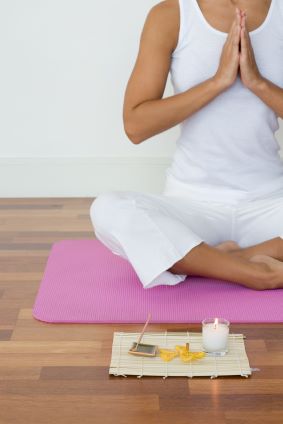 Our Yoga Timer & Clock can be programmed to chime at the end of the meditation or yoga session or periodically throughout the session as a kind of sonic yantra. Further genetic analysis revealed changes in cellular metabolism, response to oxidative stress and other processes in both short- and long-term practitioners. All of these processes may contribute to cellular damage stemming from chronic stress.
Another expert had a mixed response to the findings.
Robert Schwartz, director of the Texas A&M Health Science Center’s Institute of Biosciences and Technology in Houston, noted that the study was relatively small. He also wished that there had been more data on the levels of stress hormones within the control group, for comparison purposes.
However, Schwartz called the study “unique and very exciting. It demonstrates that all these techniques of relaxation response have a biofeedback mechanism that alters gene expression.”
He pointed out that the researchers looked at blood cells, which consist largely of immune cells. “You’re getting the response most probably in the immune cell population,” Schwartz said.
“We all are under stress and have many manifestations of that stress,” Benson added. “To adequately protect ourselves against stress, we should use an approach and a technique that we believe evokes the relaxation response 20 minutes, once a day.”
Use our unique “Zen Clock” which functions as a Yoga & Meditation Timer. It features a long-resonating acoustic chime that brings your meditation or yoga session to a gradual close, preserving the environment of stillness while also acting as an effective time signal. Our Yoga Timer & Clock can be programmed to chime at the end of the meditation or yoga session or periodically throughout the session as a kind of sonic yantra. The beauty and functionality of the Zen Clock/Timer makes it a meditation tool that can actually help you “make time” for meditation in your life. Bring yourself back to balance.
More information
There’s more on meditation at the U.S. National Center for Complementary and Alternative Medicine.
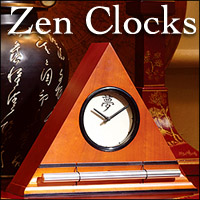 The beauty and functionality of the Zen Clock/Timer makes it a meditation tool that can actually help you "make time" for meditation in your life. Bring yourself back to balance.  It features a long-resonating acoustic chime that brings your meditation or yoga session to a gradual close, preserving the environment of stillness while also acting as an effective time signal. Now & Zen – The Meditation Timer Shop
1638 Pearl Street
Boulder, CO 80302
(800) 779-6383
orders@now-zen.com
Posted in intention, Meditation Timers, Meditation Tools, mindfulness practice
 “Mindfulness” is the spiritual practice of being aware of your present moment. A new study shows what we knew all along: Meditation can boost immunity.
If you want to strengthen your immune system, just quiet your mind and breathe deeply. At least that is the implication of a new study published in Psychosomatic Medicine; it found that people who participated in eight weeks of meditation training had a stronger immune response to a flu vaccine, and possibly more positive thoughts, than those who didn’t meditate.
The study followed 48 healthy male and female coworkers ages 23 to 56. Half (chosen randomly) participated in weekly three-hour sessions of mindfulness meditation training at work. They were also encouraged to meditate on their own for an hour a day, six days a week, with the help of instructive audiotapes. The other half were told they were wait-listed for the meditation training.
Researchers then measured brain electrical activity in the meditators and those in the control group. Why measure electrical activity in the brain? Because the front left portion of the brain becomes more active when a person experiences positive emotions and low levels of anxiety. The activity was measured while participants were resting and also while they were writing about positive or negative emotional experiences; the measurements were taken before and immediately after the eight-week trial, and then were taken again four months later.
 It's exquisite sounds summon your consciousness out of your meditative state with a series of subtle gongs. To test immunity, all the subjects were given a flu vaccine at the end of the eight weeks. The research team tracked their immune responses by measuring the level of antibodies produced by the vaccine at the four-month point.
The results of both parts of the study indicated that the brains of those who meditated had significantly more activity in the area of positive emotions and that their bodies produced more flu-fighting cells, meaning they were better prepared to fight illness. What’s more, the subjects whose brains registered the most electrical activity in the front left portion also had the greatest immune response.
Just how meditation increases immunity is still unclear, although a key aspect seems to be deep, rhythmic breathing. Deep breathing stimulates the circulation of lymph throughout the body, a process that removes toxins from tissues and organs.
Despite the fact that this study was conducted using a small number of participants who were asked to meditate for only eight weeks in the confines of their demanding work environment, it strongly suggests that a short-term training program in mindfulness meditation can have positive effects on brain and immune function.
adapted from yogajoural.com by Linda Knittel is a nutritional anthropologist and freelance writer in Portland. She is the author of The Soy Sensation (McGraw Hill, 2001).
The Zen Timepiece can serve as a mindfulness bell in two ways: it can be set to strike on the hour (providing an hourly moment of stillness), or it can be set to strike at a programmed interval, such as every 20 minutes, or even every three hours.
It’s exquisite sounds summon your consciousness out of your meditative state with a series of subtle gongs. Once you experience the Zen Timepiece’s progressive tones, you’ll never want to meditate any other way. It serves as the perfect meditation timer. Available in 5 wood styles, including bamboo.
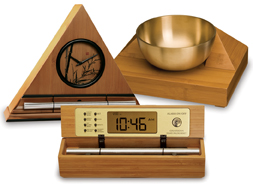 Once you experience the Zen Timepiece's progressive tones, you'll never want to meditate any other way. It serves as the perfect meditation timer. Available in 5 wood styles, including bamboo. Now & Zen – The Meditation Timer Shop
1638 Pearl Street
Boulder, CO 80302
(800) 779-6383
orders@now-zen.com
Posted in Meditation Timers, Meditation Tools, mindfulness practice
 The beauty and functionality of the Zen Clock/Timer makes it a meditation tool that can actually help you "make time" for meditation in your life. Focusing your attention on the everyday gifts that nature gives can help you cultivate reverence for the earth.
Sit quietly as you take in a few deep inhalations and then let them out very slowly.
Allow the breath to return to normal; observe it as it slowly flows in and out.
Bring your awareness to the light in your heart, where the divine spirit resides.
With each inhalation, observe the light in the heart brighten.
On the exhalation, allow that light to flow out to the earth as love.
Allow the light to expand until it becomes the size of the heart… the whole body… and then let it fill the entire room.
As you inhale, the light brightens; on the exhalation, light flows to the world as love.
Allow the light to expand beyond the room and embrace each flower, tree, plant, and animal.
Let your love fill the streams, lakes, rivers, and oceans, until it merges with the very core of our Mother Earth.
Absorbing this love offering, she makes this healing energy available to all, soothing the entire world.
Now slowly and gently begin to bring your awareness back to your own heart.
From now on, with every heartbeat, light and love are sent out as a wish of peace for all.
Although meditation can be done in almost any context, practitioners usually employ a quiet, tranquil space, a meditation cushion or bench, and some kind of timing device to time the meditation session. Ideally, the more these accoutrements can be integrated the better. Thus, it is conducive to a satisfying meditation practice to have a timer or clock that is tranquil and beautiful. Using a kitchen timer or beeper watch is less than ideal. And it was with these considerations in mind that we designed our digital Zen Alarm Clock and practice timer. This unique “Zen Clock” features a long-resonating acoustic chime that brings the meditation session to a gradual close, preserving the environment of stillness while also acting as an effective time signal.
adapted from yogajournal.com by By Nischala Joy Devi
Now & Zen – The Meditation Timer Store
1638 Pearl Street
Boulder, CO 80302
(800) 779-6383
orders@now-zen.com
 The Digital Zen Clock can be programmed to chime at the end of the meditation session or periodically throughout the session as a kind of sonic yantra.
Posted in Bamboo Chime Clocks, Meditation Timers, Meditation Tools, mindfulness practice
 It's exquisite sounds summon your consciousness out of your meditative state with a series of subtle gongs. Quieting the mind doesn’t have to mean shushing your many inner voices. By letting them have their say, you can discover the all-encompassing stillness of Big Mind.
In the 13th century, the great Zen master Eihei Dogen wrote, “To study the Self is to forget the Self.” Meditation practice allows us, through the simple act of awareness, to disengage our long-standing belief in a fixed identity. When we follow our breath, for example, through inhalation and exhalation, we are simply breathing, nothing more. Our thoughts no longer rule the roost. They cease to be the foundation of our identity, and our awareness expands. In this way, we begin to forget the self—that false construct of thoughts we’ve taken for reality for so long—and start to identify with a larger universal awareness.
As we progress in our practice, we naturally have strong insights. We might get a juicy taste of clarity; we might see all of our fears disintegrate. Unfortunately, when we get a taste of this “freedom,” we often develop a new set of ideas about what our meditation should be. Enlightenment becomes something outside of ourselves that we need to attain. We try to leapfrog over all that’s messy in our lives—the anger and jealousy, the hatred and fear, the weakness and petty acts. But we end up missing what meditation and enlightenment are truly all about.
There’s no way around it: The way to liberation points inward through the personally mundane, profane, and sacred. All of those voices in our head—no matter how scary, boring, distasteful, lascivious, or holy—must be recognized and accepted. If we deny or repress them, they only become more distracting, and our meditation practice suffers. This does not mean that we have to let them run amok; we can develop the capacity to contain a multitude of opposing voices without buying into any of them.
We can learn to recognize and accept these voices—and get a taste of emptiness—through the simple practice of Big Mind, a technique developed by Dennis Genpo Merzel Roshi, abbot of the Kanzeon Zen Center in Salt Lake City. The Big Mind process works within a familiar Western psychological framework, using the therapeutic tool of Voice Dialogue (created by Hal and Sidra Stone in the 1970s) while simultaneously pushing us through the door of Buddhist insight and wisdom. Big Mind uses a series of questions and answers that enable us to access and explore our different “personalities” and eventually transcend them.
Calling All Voices
Integrating Big Mind into your meditation practice (whatever its form) or daily life is quite easy. If you already have a regular meditation routine, do a minute or two of it to get grounded and comfortable, and maintain your usual posture. If you’re new to meditation, find a comfortable upright position (sitting in a chair is sufficient), take a few deep breaths, and relax as much as you can. Set aside 25 minutes for the entire practice.
The process of Big Mind entails consciously giving voice to different aspects of yourself. When you first hear a voice—you’re acting as your own facilitator in this process, but it can also be done with another person—ask that voice, preferably out loud, who it is and what its job is. The first one to connect with is your Controller. From your relaxed meditation position, ask yourself to speak with your Controller. Of course, you’ll probably feel a bit strange speaking to yourself this way, but you’re simply giving voice to the running dialogue that already exists inside your head.
The Controller is essentially your ego. Its job, as its name implies, is to control—your actions, your attitude, and whatever else it can wrestle into submission. You’ve likely met and probably struggle with this aspect of yourself. Ask the Controller about its job, then probe further and ask what it controls. My Controller controls everything—or, at least, wants to control everything: my actions, my thoughts, other people. It certainly tries to control all of my other voices. But this is neither good nor bad; the Controller is just doing its job. A key component of the Big Mind process is gaining the Controller’s—the ego’s—cooperation and not threatening it with annihilation, as spiritual training often does.
Just acknowledging that a voice exists and letting it have its say helps you develop a more open and trusting connection with it. Once you gain the Controller’s trust, you can ask it for permission to speak with your other voices; the ego is usually glad to temporarily step aside if it has been consulted. Next up is the Skeptic. Before asking the Controller to speak with the Skeptic, however, take a deep breath; when you shift into another voice, it’s good to give the mental movement a physical correlation.
The Skeptic’s job, of course, is to be skeptical. Of what? Essentially, everything: this Big Mind process, things you read in magazines, meditation, enlightenment… you name it. Let the Skeptic be what it is. It’s OK that a part of you is skeptical; it’s actually a good thing. If you didn’t have a skeptical voice, you might find yourself continually being hoodwinked. Ask the Skeptic what it has doubts about.
 Once you experience the Zen Timepiece's progressive tones, you'll never want to meditate any other way. It serves as the perfect meditation timer. Now take a breath and ask to speak with Seeking Mind. Shift over to this new voice. What’s Seeking Mind’s job? My Seeking Mind is constantly searching for something better: enlightenment, peace of mind, a healthy body. (Sometimes it seeks sweets, greasy food, and alcohol.) It will never stop seeking. Meditators often have a problem with Seeking Mind; they want to get rid of it, because it creates so much desire. But Seeking Mind is doing what it’s meant to do. It’s helpful to remember that without it, you might not be meditating in the first place.
Take another breath and shift to Nonseeking Mind. What’s its job? Explore Nonseeking Mind; ask it if it ever seeks. Nonseeking Mind is the state of meditation. There is nowhere to go, nothing to do. Again, this is neither good nor bad; Nonseeking Mind simply doesn’t seek. Take a moment here to notice how easy or hard it is to shift from one voice to another. Moving among your different selves helps you realize the empty nature of the self—that is, you have no static identity; you are continually changing. You might think your identity is set in stone (I am shy, I am angry, I am spiritual), but these are just voices floating in space; they’re not you. You’re much bigger than you think.
Now take a breath and shift into Big Mind. This is the voice that contains all the other voices. It is known by various names: the ground of being, Buddha Mind, Universal Mind, God. By its very nature, it has no beginning and no end. There is nothing outside of Big Mind, but Big Mind is a voice inside of you. Big Mind’s job, you could say, is just to be. Ask it what it does and doesn’t contain. Does it contain your birth? Your parents’ birth? Your death? Can you find its beginning or end? Does it contain your other voices? How does it see your daily problems? Stay in Big Mind for as long as you can. In this state, you have surrendered your personal ego (with its permission) to your true and universal nature. Becoming a Buddha is as easy as that, although letting go of your ego is often difficult.
Next, find your voice of Big Heart. Explore what it does for you and others. Its job is to be compassionate. How does it respond when someone or something is hurting? Does it take the form of tough love or tender nurturing or both? Does it have any limits when faced with suffering? Sit with this voice for a while.
Now shift back into Nonseeking Mind and stay with it for a couple minutes to end the meditation. Though you might want to stay in Big Mind forever, the simple fact is that no single voice is the stopping place; there is no stopping place. Continually working with and accepting all of your voices will, in turn, help you accept the myriad voices of others.
The Buddha at Home
The above exercise is a short example of working with internal voices and accessing Big Mind. There are, of course, an infinite variety of selves within you; working through the Controller, you can explore the ones you find personally resonant. Which voices you acknowledge depends on your life circumstances; perhaps you contain the voice of Damaged Self, Angry Self, or the Holy Father. Experiencing Big Mind is like taking an X ray of your true nature, your Buddha-nature, and projecting it onto a screen. The process gives you the clarity to recognize various aspects of yourself and the ability to move easily among your many voices without getting bogged down in or attached to any one voice (even Big Mind). When, with practice, you develop that mobility, you become free to respond with ease to anything that arises. This is meditation in action.
Once learned, the Big Mind process can be used at any time during meditation practice or throughout the day. If you’re feeling particularly angry during meditation, you can connect with Angry Self, let it have its say, and move into Nonseeking Mind or Big Mind. Play with your various voices and see what you can find.
Many of us spend countless hours in meditation trying to fix ourselves so we can attain spiritual knowledge. But the truth is, there is nothing to fix. We—all of us—are already Buddhas. There is nothing to add, nothing to subtract, and nowhere to go. By working with the very intimate voices of our own minds, the Big Mind process lets us “stay at home” while simultaneously acknowledging that our “home” includes a lot more than we think. After all, “To study the Self is to forget the Self.” Studying the voices in our heads is a good way to start.
Although meditation can be done in almost any context, practitioners usually employ a quiet, tranquil space, a meditation cushion or bench, and some kind of timing device to time the meditation session. Ideally, the more these accoutrements can be integrated the better. Thus, it is conducive to a satisfying meditation practice to have a timer or clock that is tranquil and beautiful. Using a kitchen timer or beeper watch is less than ideal. And it was with these considerations in mind that we designed our Zen Alarm Clock and practice timer. This unique “Zen Clock” features a long-resonating acoustic chime that brings the meditation session to a gradual close, preserving the environment of stillness while also acting as an effective time signal.
adapted from Yogajournal.com by John Kain has written for Tricycle, Shambhala Sun, and the Web site Beliefnet. A meditator since the early 1980s, he lives near Woodstock, New York. For more on Big Mind meditation, visit www.zencenterutah.org/bigmind.html.
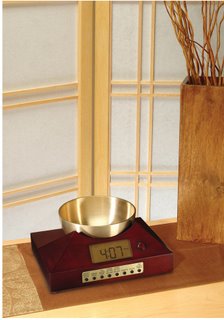 It's exquisite sounds summon your consciousness out of your meditative state with a series of subtle gongs. Now & Zen – The Gong Meditation Timer Store
1638 Pearl Street
Boulder, CO 80302
(800) 779-6383
orders@now-zen.com
Posted in Meditation Timers, Meditation Tools, mindfulness practice
« Previous Page — « Previous Entries
Next Entries » — Next Page »
|
|
|
|